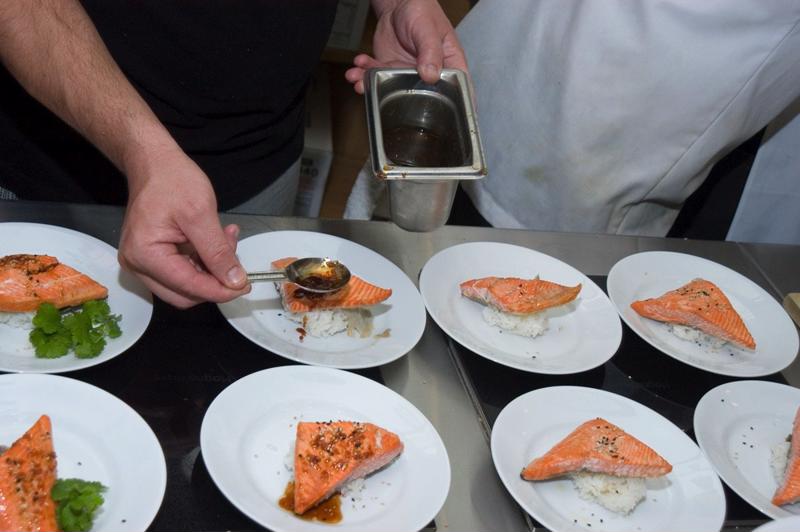This generation is becoming increasingly aware of the impact that humans have on the environment and making changes to fix it. Choosing fuel-efficient cars, shopping with reusable bags and purchasing locally made food and goods, more young people are doing what they can to preserve our planet. When it comes to sustainable seafood, though, many people are puzzled by what exactly what makes something deserving of this label. Here’s what you should know about this seafood movement, especially if you’re an Austin culinary arts student looking to open your own restaurant one day:
 Make sure you’re getting the fish you’re paying for.
Make sure you’re getting the fish you’re paying for.What does sustainable mean?
There are many factors that go into whether a fish or not can be considered sustainable, but in the simplest terms, sustainable seafood has to come from a fishery that operates under practices that won’t reduce the species’ ability to maintain its population. Greenpeace states these practices also can’t cause the species in question to negatively impact other species by:
- Removing their food source.
- Accidentally killing them.
- Damaging their physical environment.
Some methods of catching fish are more eco-friendly than others. Bottom trawling, where the sea or ocean floor is destroyed in the process, absolutely cannot be sustainable. Pair trawling, where two boats tow a large net, is also dangerous for the ecosystem, since it tends to catch far more than the species targeted, like dolphins or sea turtles.
“87 percent of the world’s fisheries are stressed.”
Why is sustainable seafood so important?
Sustainability is an important aspect of just about any business operation. Nobody wants to cause destruction to land or livestock in an effort to make money. However, sustainable seafood is particularly important because, according to Triple Pundit, approximately 87 percent of the world’s fisheries are depleted, exploited or fished at their maximum level. This is causing the demand for fish to exceed its availability.
Misleading labels
This practice of overfishing our water sources is causing some shady fisheries to actually mislabel their fish, making people think they’re getting a certain species when they’re getting something different. Cheaper, lower qualities fish are typically sold for the price of better fish. Shopping sustainably also limits your chances of being duped by misleading labels, ensuring you’ll be getting the high quality seafood you’re paying for. The Environmental Defense Fund outlined a number of ways this is done: tilapia may be sold as red snapper, farmed fish may be sold for wild or out-of-season fish can be sold as “fresh” all year round.
How to buy sustainable
If you think the price of the fish you’re buying is too good, it probably is. If the fish at your local market is labeled, look for fish that was caught locally. While you may not be able to guarantee that sustainable methods were used to catch the fish, you can be certain that transportation and shipping isn’t an issue, which is its own environmentally friendly option. Many people try to stray from farm-raised fish because they’re not usually as nutritious, but if these fish are kept in suitable conditions this is another more-sustainable option.
Beware of “organic” labels on your fish, though. A common assumption is that organic fish is inherently sustainable, but that isn’t always the case. For example, if these fish are caught in foreign countries, they may not have to adhere to the same standards as USDA-approved organic fish. The Environmental Defense Fund claims that many foreign organic standards allow nonorganic seafood byproducts, like the fish’s food, and may use pens that contaminate other bodies of water.




